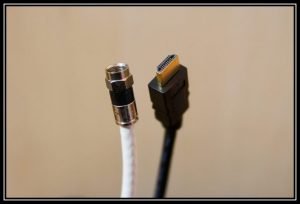
They can be easily detached and possess less sturdy construction than coaxial cables. The main downside is that optical cables cannot carry many high quality loseless audio formats. These cables assure a clear acoustic experience as they are made of optical fibers, which are known for their resistance to electromagnetic and radio frequency interference. Also, coaxial cables do not support high quality loseless audio formats, and are vulnerable to possible electromagnetic and radio frequency interference. High bandwidth means brilliant acoustic experience, but users can rarely differentiate between sound qualities of the two cables.

HDMI 2.1 cables introduced in 2018 theoretically offer the bandwidth of 48 Gbps.Ĭoaxial, Optical, and HDMI Audio Connections: Benefits and Challenges AnalyzedĪlthough the limitations of each of these cables must be much clear by now, the following pointers will help you understand it better.Ĭoaxial cables support high bandwidth than optical cables and possess sturdy construction. HDMI cables have evolved over the years and they support high bandwidths. The optical cable can support bandwidth up to 96 kHz and coaxial cables have slightly higher bandwidth than that, as they can support high-quality audio formats up to 192 kHz. In this case, the total cost of these two different types of cables will be more than a single HDMI cable. If you are trying to cut down on connector investment by choosing coaxial or optical cables, perhaps, you may end up buying second type of cables for video transmissions. HDMI cables are slightly expensive than the other two variants. HDMI audio connections are designed to support high-quality sound formats such as DTS-HD Master Audio, Dolby TrueHD, Dolby Atmos and DTS:X.ĭigital coaxial and optical cables do not support video transmission, and this is where HDMI cables make a difference. The optical digital signals can transmit DTS and Dolby Digital sounds, whereas digital coaxial cables offer 5:1 channel surround sound. Optical cables are enveloped with a dark sheath that helps prevent interference of other light sources. The optical fibers may be made of materials like glass, silica, and plastic. Against this, optical cables are made of optical fibers. HDMI cables comprise four shielded twisted pairs of copper wires. The following pointers will help you understand them in depth.Ĭoaxial cables and HDMI cables feature copper wires. The design of these cables largely differ from optical and coaxial cables discussed above.Ĭomparisons between Optical, Digital Coaxial and HDMI Audio ConnectionsĪlthough each of these audio connections have typical features and have been widely used for making sound connections, they differ in terms of designs and results. These cables facilitate the easy transmission of digital audio and video signals through one cable. At the receiver end, the signal is again converted to an electrical signal.Ĭoaxial and optical cables have been around for a while, however, HDMI cables were introduced in 2002. The audio signals are converted to optical signals before it reaches the receiver. The audio signals are usually transferred through these fibers. These cables are made of optical fibers, thus the name.

Digital coaxial cables only transmit audio signals. These cables theoretically assure superior sounds and great bandwidth. Generally, thicker than regular RCA cables, digital coaxial cables are made of shielded single copper wires, which are similar to the ones that you use to connect your television sets to the cable box.

Coaxial cables look similar to a traditional RCA connector, which is often chosen for its durability and rugged construction. They are one of the most common choices for making digital audio connections.


 0 kommentar(er)
0 kommentar(er)
